MusicRadar Verdict
If you want a great-sounding, cutting-edge digital piano with an elegant, traditional look and a great key action, the HP702 needs to be somewhere near the top of your list. Throw in compatibility with Bluetooth and the Roland Piano app for iOS and Android and you have a well-rounded and aesthetically pleasing product that makes an excellent musical centrepiece for your home, church or classroom.
Pros
- +
Elegant traditional cabinet design with plenty of modern features
- +
Great-feeling keyboard
- +
Piano Designer very customisable
Cons
- -
Needs app to access accompaniment styles
- -
The placement of the headphone output box is not knee-friendly
MusicRadar's got your back
Roland HP702 review: What is it?
Primarily aimed at home users, beginners and students, Roland’s HP range of digital console pianos consists of two models, the HP704 and HP702 (the HP stands for ‘Home Piano’). While both instruments are powered by Roland’s excellent SuperNATURAL acoustic piano modelling technology, the pricier HP704 features a higher-spec keyboard and a more powerful Acoustic Projection speaker system than its more affordable stablemate the HP702.
As the entry-level instrument in the range, the HP702’s main features include Roland’s acclaimed PHA-4 Standard keyboard and Progressive Damper Action pedals, their Headphones 3D Ambience effect and a large repository of over 320 sounds, all housed in a traditional wooden cabinet design. On top of this, the HP702 has the ability to connect your smartphone or tablet via Bluetooth and practice with audio from apps routed through the piano’s speaker system.
Available in four different wood finishes - light oak, dark rosewood, charcoal black and white - the HP702 resembles a somewhat shortened traditional upright acoustic piano, with the exception of a strip of controls spanning the area above the keys.
Roland HP702 review: Performance and verdict
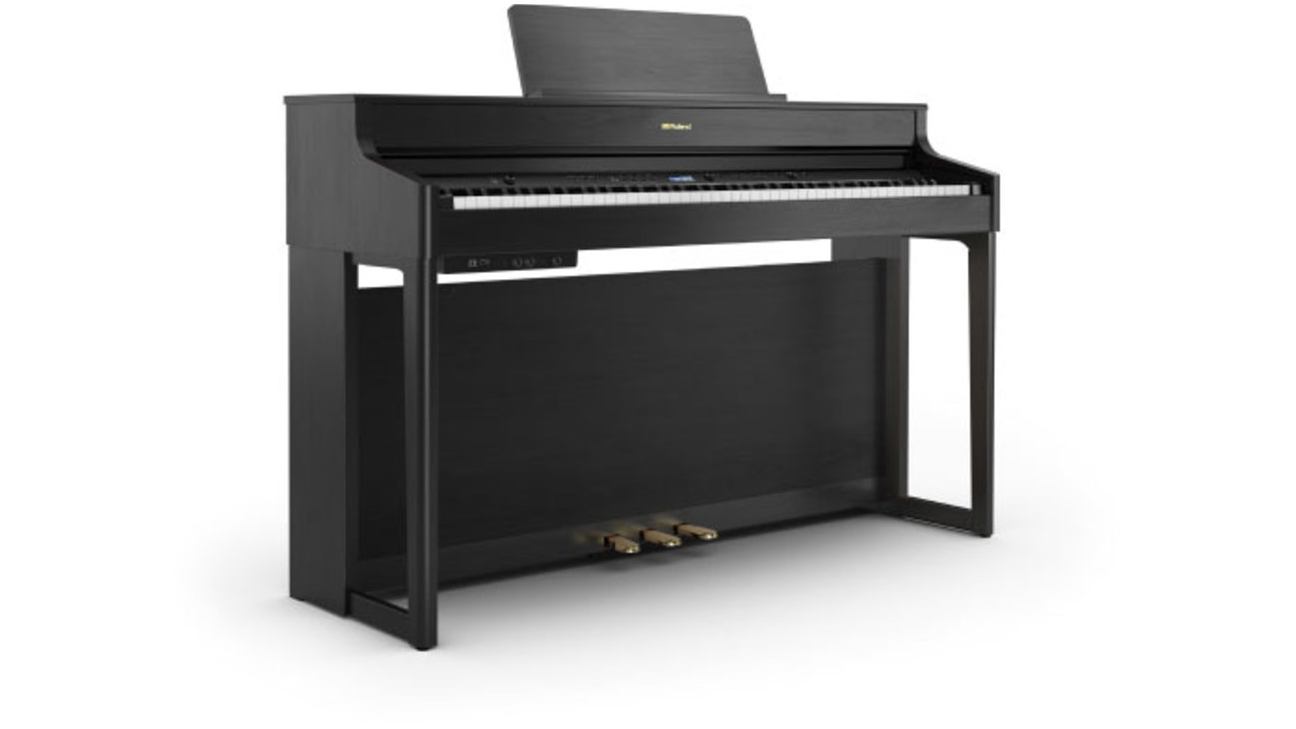
While the range-topping HP704 model benefits from Roland’s PHA-50 part-wooden keyboard, the PHA-4 Standard keyboard in the HP702 is the same as that found in the company’s other mid-range piano models, such as the RD-88 stage piano and the FP portable range. We’re big fans of the PHA-4 here at MusicRadar, finding it to be a supremely playable and responsive action whichever instrument it finds itself in, and this includes the HP702.
Despite the plastic keys, we weren’t surprised to rediscover its excellent natural, authentic feel in full effect here, with a decently realistic escapement action and progressive weighting from heavy in the left to lighter up top on the right. Although some might find the action a tad heavy for the beginner, the overall weighting can be adjusted easily from the front panel using the Piano Designer feature - more on this later.
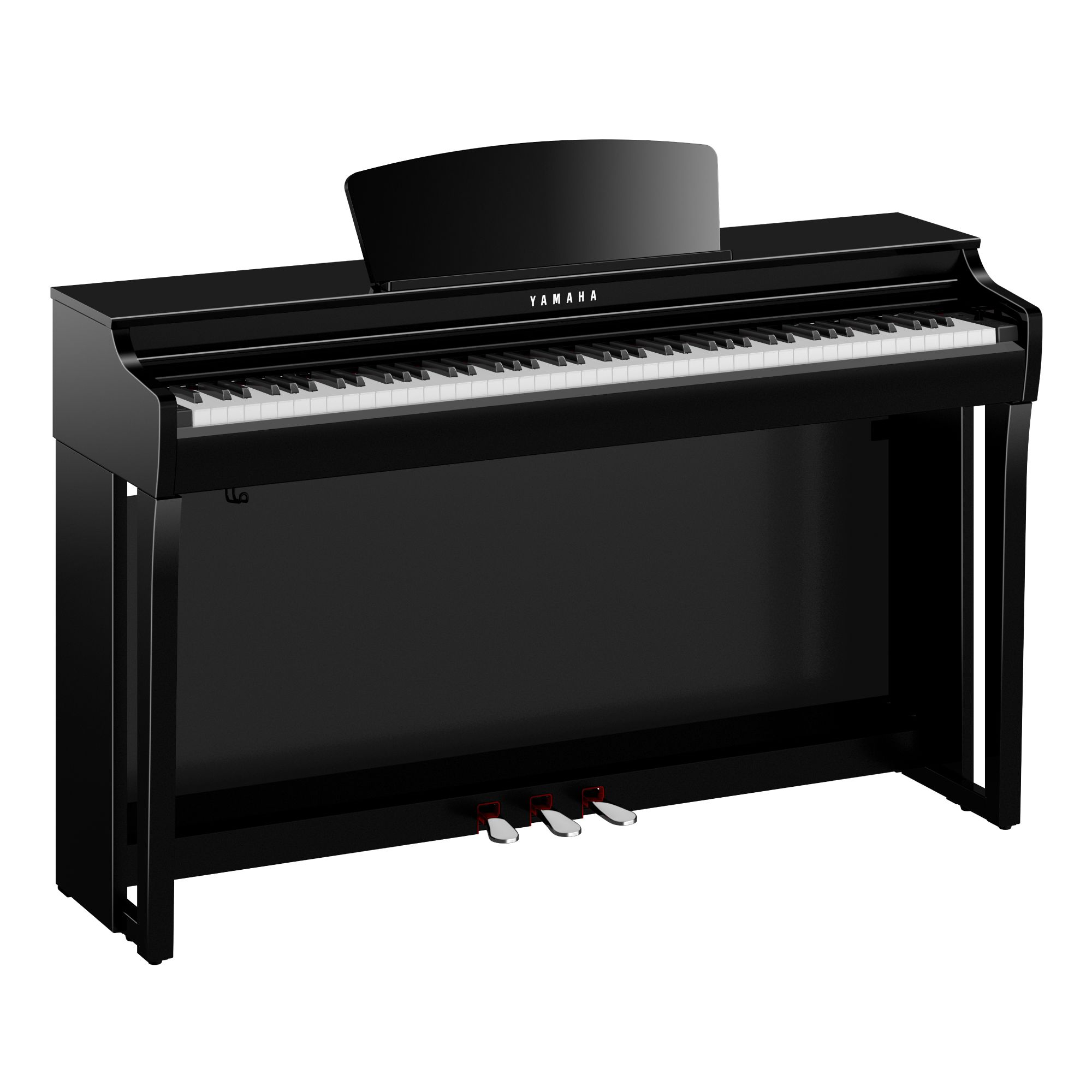
Yamaha Clavinova CLP-725: Similarly-priced, home-focused console piano from Yamaha using samples from their own CFX grand piano as the sound source, mated to a GrandTouch-STM keyboard. Not as many sounds, but what there is very high quality.
Casio Celviano AP-710: Casio’s contender to the mid-priced home digital piano throne, and proudly developed in conjunction with C.Bechstein, the AP-710 features Casio’s Tri-sensor Scaled Hammer Action Keyboard II together with the AiR Grand Sound Source.
One of the greatest benefits that digital pianos have over their acoustic cousins is the ability to play while wearing headphones. The HP702 features Roland’s Headphones 3D Ambience effect to make playing with cans an immersive and rewarding experience. In practice, this works very well indeed, placing the player in the centre of a wide and inclusive soundstage.
The HP702’s headphone module is a rectangular box located on the underside of the left of the keyboard, but the box is positioned in such a way that it’s easy to catch your left knee on it. Let’s just say that this is painful enough that you’ll probably only do it once! Aside from the two 6.3mm and 3.5mm headphone jacks, this box also houses the piano’s two USB ports - one for connecting to a computer for transmission of MIDI and audio data to a DAW, and the other for transfer of song and registration data to a USB thumb drive - plus there’s a pair of line output jacks for connecting to a PA system and a handy adjacent hook to hang your headphones on when not in use.
Down at floor level, all three pedals are present in an appealing modern chrome finish, with proper progressive-action damper and soft pedals occupying their usual right and left positions on the pedalboard. The central sostenuto pedal works as expected - when pressed, any held notes will be sustained but any new notes you play won’t be, emulating the behaviour of an acoustic piano. This pedal also doubles as a footswitch to advance through the list of saved registrations, or favourite setting configurations.
Interface of it
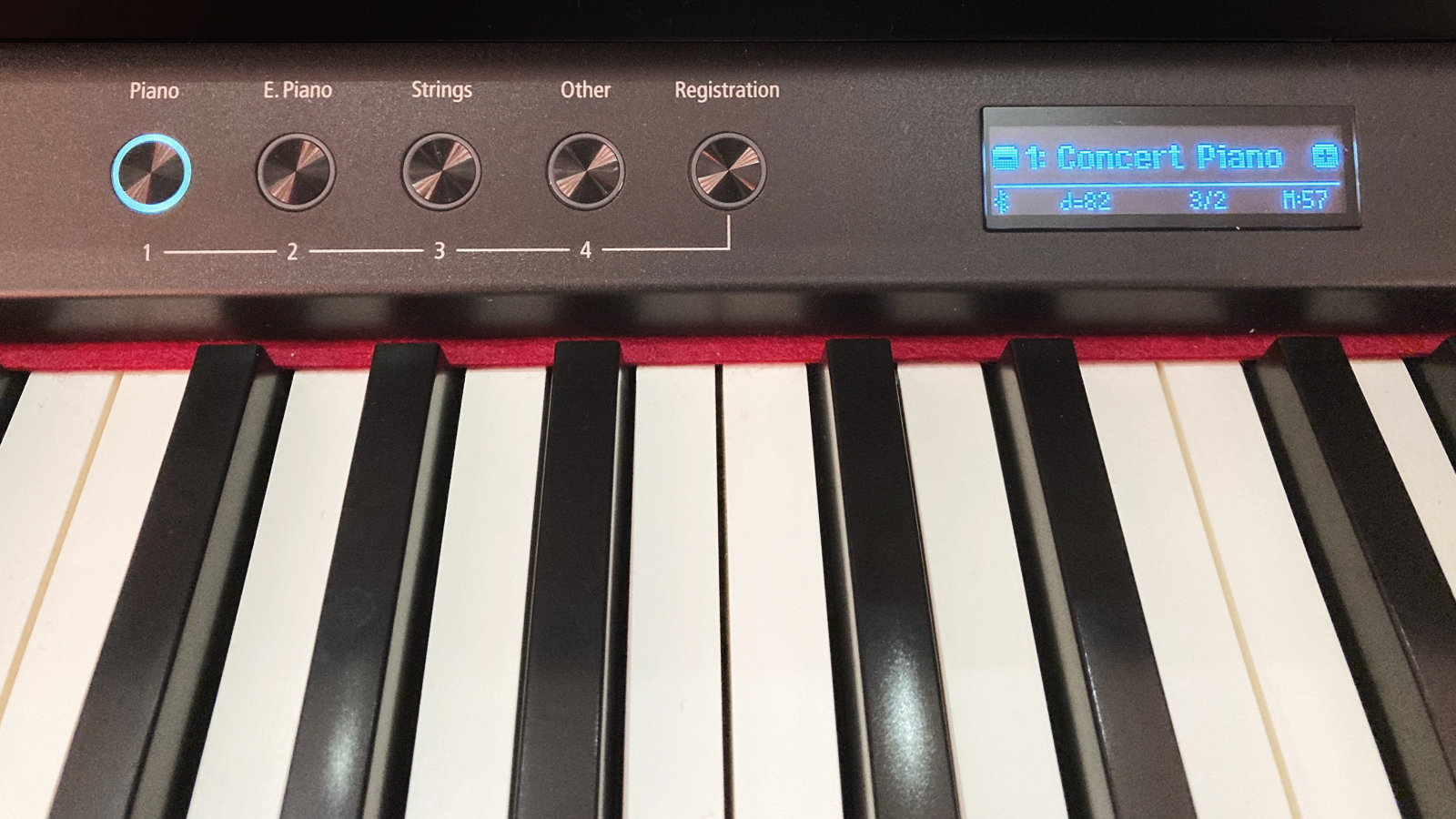
The HP702 passes our ‘turn on and play’ test very well - the piano can be turned on and off simply by opening and closing the retractable keyboard cover, coming to life and ready to play within a couple of seconds. Spanning the width of the piano above the keyboard is a comprehensive range of controls neatly arranged around a central 128 x 32 dot OLED display screen.
There are rotary encoders for volume control, metronome tempo and navigation, plus several LED halo-lit, flush-mounted buttons for things like Piano Designer mode, Transpose, Split/Dual function, sound category and registration selection and other settings. The interface seems very similar to that found on the FP-X series of portable pianos, which has garnered much acclaim for its ease of use, and we found it to be pretty easy to get to grips with.
If you don’t want the front panel controls on show, the integrated keyboard cover can be pulled forward slightly to a detent position designed to conceal them. Known as ‘Classic Position’, this returns the piano’s look to that of an acoustic instrument, a thoughtful touch for those who might prefer a distraction-free playing environment.
Sounds good
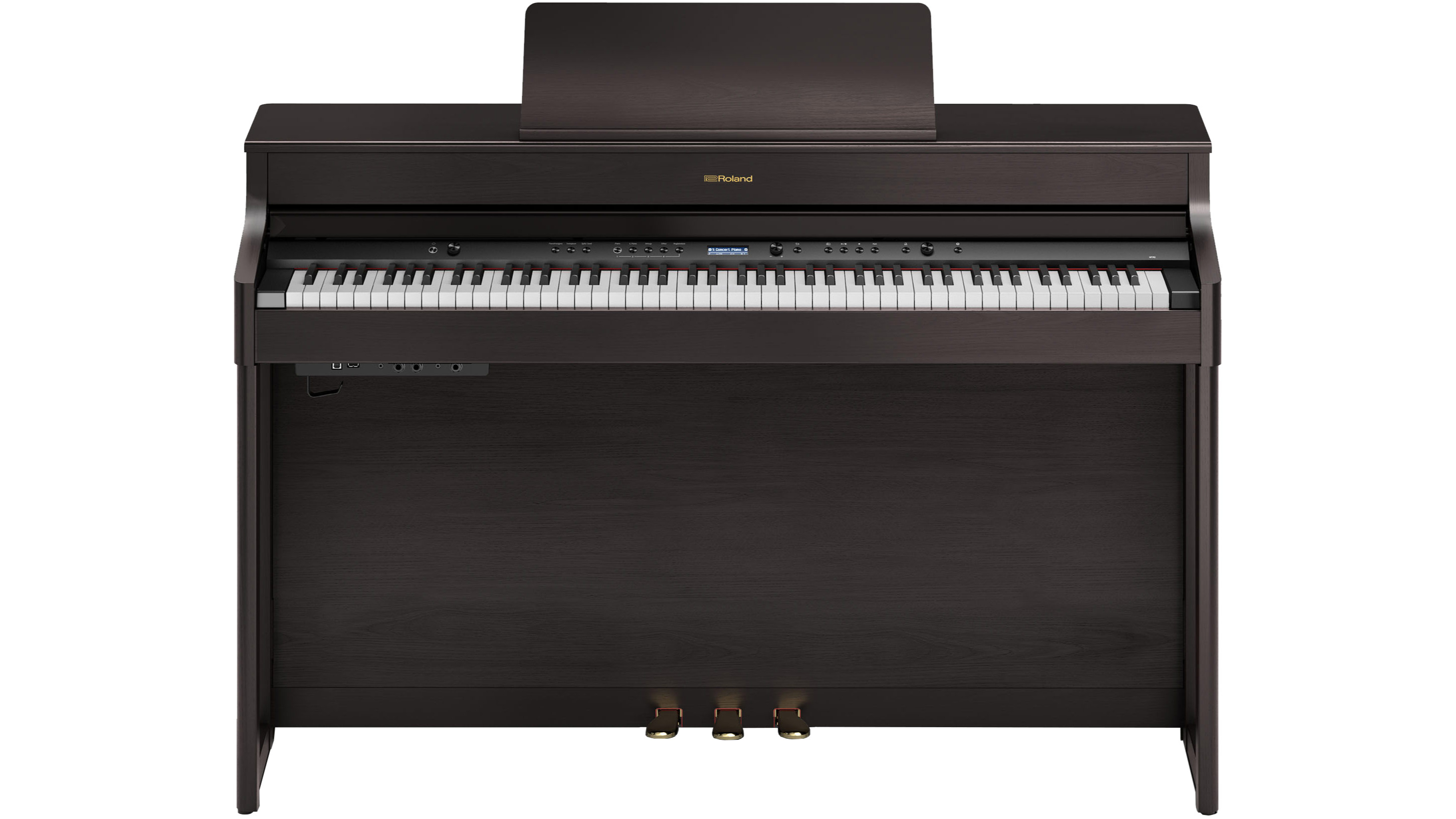
The central turn-and-push rotary encoder is a bonus, as it narrows sound selection to a push of the required category and a scroll through the available sounds. There’s a total of 324 tones to navigate through, including drum sounds, which highlights one niggle we came across with the HP702. There’s no onboard rhythm sequencer as such - instead, there’s a range of hidden accompaniment styles that are only accessible via the Roland Piano companion app, which requires you to hook up to a tablet or mobile device.
In terms of sound quality, the HP702’s wooden cabinet and room-filling dual 12W speaker system showcase the SuperNATURAL modelled acoustic piano tones at their best, delivering a warm, bright and faithfully-acoustic tone that’s incredibly close to the authentic acoustic piano experience.
Thanks to the SuperNATURAL modelling technology used to generate the piano sounds, the tone is involving, rich and full, and since it generates the sound of each note in real-time in response to your playing, the HP702 is capable of impressive levels of expression and nuance.
There’s unlimited polyphony on tap when playing solo with the piano tones, and a not-ungenerous 384 notes available when playing with the non-piano voices. The electric pianos, organs, strings, mallets and everything else are of the kind of high quality and degree of usefulness that we’ve come to expect from Roland, and the selection of available tones is varied enough to keep most players satisfied - special mention to the harpsichord settings, which sound amazing.
Designer Chic
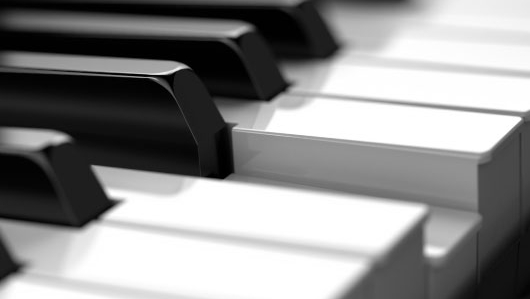
Back with the acoustic tones, because it uses physical modelling rather than sampling as the basis for its sounds, the HP702’s Piano Designer mode allows you to deeply customise the piano sound via access to things like Key Touch (makes fast runs easier by reducing the amount of pressure needed to sound a note), Ambience, Headphones 3D Ambience, Brilliance, Master Tuning, Temperament, Temperament Key, Hammer response, and more.
You can edit your virtual grand piano’s lid position and the amount of modelled full-scale string resonance, damper resonance, key off noise and cabinet resonance, soundboard type and damper noise, even adjust the tuning and volume of single notes.
We found the adjustable full-scale string resonance setting useful, as it seemed to cause a degree of excessive beating between note decays in some cases, so it was nice to be able to turn this off. Once you’ve tweaked all of these settings, you can save your custom piano sound to be the default that loads when you turn on the instrument.
Appy Days
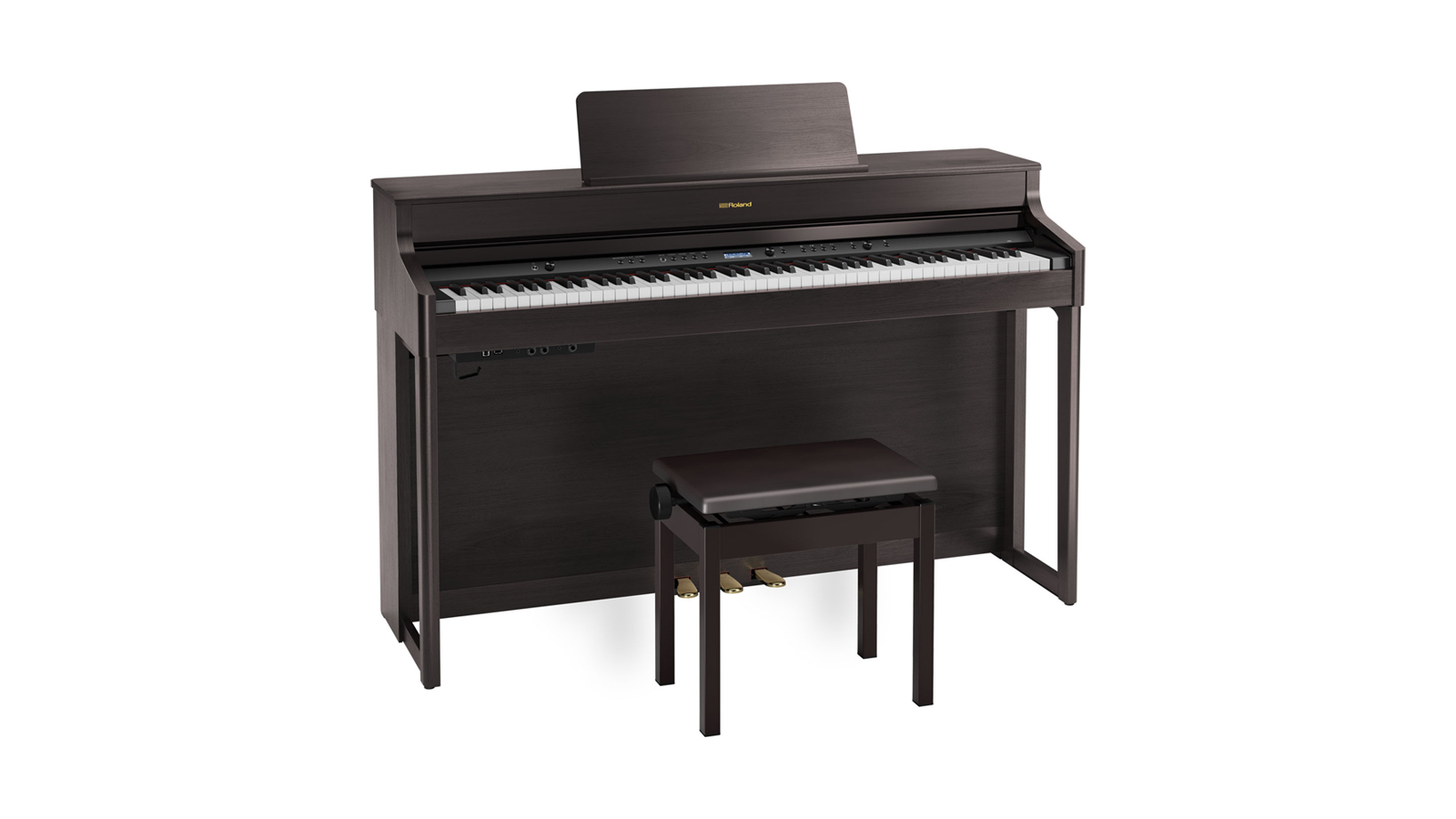
The HP702 is fully compatible with the free Roland Piano App, designed to encourage reluctant students to get more out of practising. The app works via Bluetooth across multiple instrument models, only granting access to the features that are compatible with your particular piano.
In the case of the HP702, this means making the Piano Designer feature much easier to use and granting access to those aforementioned hidden accompaniment styles and General MIDI tones.
You get a visual metronome, performance recorder function, flash card and ear training exercises, a One Week Master feature that lets you gradually learn a new piece in seven days, enhanced view of musical scores for songs from the onboard song library and easier control over piano functions such as transpose, split, key touch, ambience, and more.
Roland HP702 review: Specifications
- Keys: PHA-4 keyboard with 88 individually weighted keys with escapement
- Weight: 54.4kg
- Dimensions (W x D x H)mm: 1377 x 468 x 1067
- Speakers: 2 x 12W
- Pedals: Progressive Action Damper & Soft, Sostenuto
- Connections: 1 x 6.3mm headphone output, 1 x 3.5mm headphone output, USB to host, USB to device
- Tones: 324
- Polyphony: Unlimited (Piano sounds) / 384 notes (non-piano sounds)
- Contact: Roland
Dave has been making music with computers since 1988 and his engineering, programming and keyboard-playing has featured on recordings by artists including George Michael, Kylie and Gary Barlow. A music technology writer since 2007, he’s Computer Music’s long-serving songwriting and music theory columnist, iCreate magazine’s resident Logic Pro expert and a regular contributor to MusicRadar and Attack Magazine. He also lectures on synthesis at Leeds Conservatoire of Music and is the author of Avid Pro Tools Basics.
“Excels at unique modulated timbres, atonal drones and microtonal sequences that reinvent themselves each time you dare to touch the synth”: Soma Laboratories Lyra-4 review
“I used everything I knew about music”: How Green Day exceeded expectations with their most ambitious song
YouTube just added AI tools that makes musicians, library music and video editors redundant










